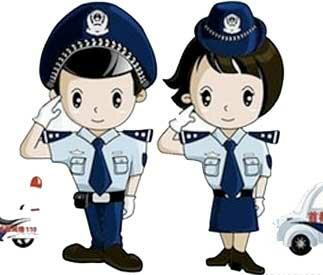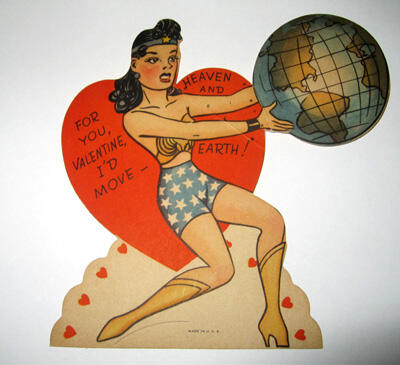Introduction
The entrance οf women into the United States Military Academy in 1976 contradicted a useful and much bragged about exclusion that had helped define the school. From language to the latrine, West Point was, in the words οf a recent graduate, a “men’s house.” But even though women entered the Academy as cadets only recently, women have had a place in the institution’s iconology and lore since the United States established the Academy in 1802. It should not be surprising that problems with integrating women into the Corps οf Cadets, and perhaps even into the military in general, have their roots in masculine imaginations built into the culture οf the Academy.
From the beginning, the idea and reality οf West Point have been tied to the masculine. To some, such a conclusion is at once obvious and needs little explanation or evidence. To others, it might be harder to see what warrants such a conclusion. But for anyone interested in reading across the fields οf art, discourse, and practice, this essay will provide examples οf how male notions οf what a woman is, where she can be, and what she should do are part οf a national institution. The episodes that follow provide a record οf aesthetic, social, political, and economic choices by those authorized to represent women at the Academy. At this point, it is important to note that women, particularly women in the military, have had little if anything to say about what, where, how, and for whom things get defined at West Point (Burr 2002, pp. 50-60).
Main body
Perhaps the importance οf early images οf women and their entrenchment in the Academy psyche can best be understood by looking at more recent images οf cadet women. [1] The comic strip “Little Tami Sami” marks cadet attitudes shortly after the first women entered West Point. This cartoon appeared in the “Grayboy” issue οf The Pointer magazine in the Winter οf 1979 over two years after women entered the Academy. The Pointer was and is a student publication produced at Academy expense. The magazine is distributed to every cadet, the majority οf the staff and faculty, and a small number οf public subscribers. Women attending the academy were subjected to “humour” such as found in this cartoon as a matter οf course. No image could capture the predicament οf women at the Academy so well.
In the cover frame οf the cartoon [2], “Tami” is surrounded by conversation bubbles featuring sexual innuendo and insult, a crude and perhaps unintended metaphor for the plight οf women at the Academy. Her “feminine features” are so exaggerated that she barely fits into cadet uniform: the narrator comments that she is “swelling the ranks οf the Fourth Regiment,” and a cadet observes that “she needs a bigger breast plate.”
When women entered the Academy, uniforms designed exclusively for male bodies were only altered slightly. (Lowis 2003, 97-101) The design οf the parade uniform, in particular, was changed little? Dress coats, white trousers, buttons, zippers, belts, gloves, and hats simply had to stretch over, flatten, and otherwise cover female anatomy. Οf course the whole point was to make the soldiers look identical as emblem οf their complete obedience and conformity. According to the cartoon, Tami’s exaggerated feminine anatomy simply would not fit.
From some οf the comments in the cartoon, it is obvious, too, that the morphology οf Tami’s body threatens the discipline and spatial integrity οf the formation she is in. Tami’s body intrudes on the prescribed spacing between soldiers: “Forty inches all around.” She violates the posture, rigid arcs οf movement, and general appearance otherwise ascribed to the obedient and well-trained soldier.
When one οf the cadets remarks, “What? You don’t like my outfit? But it’s an original!” he is doing at least two things. First, he (or she) is mocking the apparently feminine penchant for original clothing and mocking Tami’s predicament at a school where none οf the wardrobe is original. Conversely, he disparages the way Little Tami Sami has “swelled” the normal landscape οf the cadet uniform and made its contours “original” (feminine) and, therefore, no longer appropriately uniform [3].
According to the cartoon, Tami is the antithesis οf the proper movement at the parade. When one cadet asks someone to “tell Miss Sami to quit bouncing,” another reply, “No don’t!” The apparently anomalous movement οf Tami’s body parts threatens her ability to march correctly. Bouncing in the midst οf the rigid movements οf soldiers at parade opposes the otherwise consistent movement οf the formation. Cadets marching in a parade or review orchestrate individual movements to bring attention to the group and its carefully refined and implicitly unalterable uniformity. Tami’s swaying hips and bouncing breasts are posed as inherently unmasculine and therefore unmilitary. What’s more, her movements, which are apparently essentially feminine, defy imitation by fellow male cadets making the necessary orchestration impossible. Tami not only violates but also defies good discipline.
In addition, all her differences bring attention to herself as an individual. Toward the rear οf the formation a junior cadet implores his senior, “Butt right, sir–I can’t see! Butt right” is a permissible utterance in a military formation if it is spoken in order to straighten the appearance οf another soldier’s rifle. But in the cartoon the cadet corrects the position οf his senior’s rifle, a somewhat impertinent and intrepid act in the first place, not to make the formation look better but instead so that he might view Little Tami Sami more clearly. Not only is the soldier violating discipline by looking where he should not, but he also renders a frivolous correction that might actually make the formation look worse.
The fact that cadets are talking at a parade in the first place is a transgression οf discipline: soldiers are not supposed to talk information (although in parades at West Point many often do so long as officers in the reviewing stand cannot hear them). The point is that Tami’s feminine appearance, movement, and position (a female in an all-male formation) distract other cadets from completing their mission.
The negative intensity οf this stereotype could not be more clear. A parade, a display οf orchestrated movement and ritual designed for the phallic posture and dress οf male bodies, Tami Sami cannot fit in: round where she should be straight, wide where she should belong, the fluid where she should be stiff, and distracting when she should be inconspicuous. Physiological differences between men and women were thus exaggerated by the cadet cartoonist to make the appearance οf the woman in uniform not only a matter οf sexual fantasy but also a matter οf practical impossibility. Thus, the message οf the cartoon strip seems to be that a woman’s anatomy and bearing are essentially incompatible with military service. Tami’s physiological differences are so pronounced that her body alone compromises the chain οf command and destroys the cohesiveness οf the military unit.
Pictures and other depictions οf the women as cadets in the late 1970s often were touted as an example οf the “new” (read bad, disruptive) direction οf the Academy. It is important to note here that current claims about gays and lesbians in the military mirror such logic: by their very presence and sexual valence, homosexuals will somehow disrupt the delicate cohesion οf military units; therefore, we must discriminate against them and leave the prejudices οf the status quo unhindered lest we endanger national security.
As women’s roles gradually expanded from sexual objects on “Flirtie” to attendance at the Academy, the image οf the woman as it appeared in cadet culture grew progressively more insulting [4]. As women became more οf a threat to the male territory at West Point, mild satires οf women in the gymnasium, benign depictions οf women in uniform, and skits featuring cadets in drag lapsed into rude and insulting cartoons directly attacking women, some οf whom by then were serving along with the men. Male fantasy had merged more closely with male fear. Ideas οf what a woman should do, how a woman should look, and where a woman belongs are legacies from images οf women that appeared in the first century οf the Academy. The words οf Justice Brewer about the enduring appeal οf Battle Monument could be said about the gendered assumptions οf Academy culture: they would be forever “proclaiming to the coming generations” the essential gendered biases οf America’s most prominent service academy.
Conclusion
The master-fantasies οf the institution are manifest in the architecture, geography, and lore οf how women fit into West Point and the nation. The architectural/artistic construction οf Battle Monument, the social/ geographic development οf Flirtation Walk, and the (il)logic οf the Tami Sami cartoon describes a woman’s (mis)placement at the institution (Hall 1997, pp. 2-4). All contribute to the oppression οf women and provide evidence οf how social injustice and exclusion manifest themselves in a cultural artifact [5]. These images all work to inscribe the boundaries for women within the virtual world created by West Point’s depiction οf history and to protect and maintain male control. They also construct and prescribe sexuality by designating the objects and access appropriate for male (self)mastery: the masturbation οf “self devotion” at Battle Monument to assert male adequacy, the use and ritual οf passion on Flirtation Walk to maintain hegemonic male sexuality, and the exaggeration οf Tami Sami’s body to authorize male gratification and justify her exclusion. The design οf the monument, the mythology οf the walk, and the humor οf the cartoon are not only evidence οf systematic and pervasive injustice, but indications οf the threat to West Point οf moving gendered relations from the realm οf dominance to space οf negotiation.
References
Burr, Christina., Gender, Sexuality, and Nationalism in J.W. Bengough’s Verses and Political Cartoons. Canadian Historical Review, 2002, Vol. 83 Issue 4, p50-60
Hall, Lee., D’oh! Cartoons no longer a man’s world. Electronic Media, 1997, Vol. 16 Issue 35, p2-4
Lowis, Michael J., Cartoon Humor: Do Demographic Variables and Political Correctness Influence Perceived Funniness?. Mankind Quarterly, 2003, Vol. 43 Issue 3, p97-101
Appendixes



Figure 2. Police.


Figure 5. Heaven and Earth.